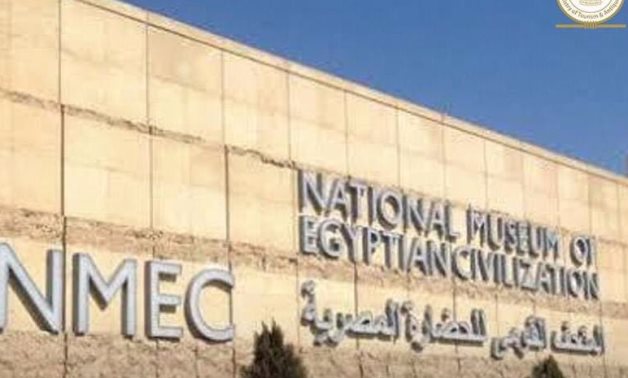
File: the National Museum of Egyptian Civilization.
CAIRO - 14 February 2021:After the completion of the engineering studies and the approval of the Permanent Committee for Islamic, Coptic and Jewish Antiquities, the Supreme Council of Antiquities began the work of dismantling and moving the "Al Tabataba" archaeological scene from its current location on the eastern side of Ain Al-Sira, to the opposite side on the edge of Ain Al-Sira next to the National Museum of Egyptian Civilization.
This is to protect it from water leakage inside.
Dr. Osama Talaat, Head of the Islamic, Coptic and Jewish antiquities sector, confirmed that the work of transportation is carried out according to recognized scientific methods, and that the transfer process came to protect and preserve the landscape and show its archaeological and artistic value, as it has been suffering from the water issues for more than 22 years, indicating that this decision was issued after the formation of several archaeological and engineering committees over the years, which saw that it is best to move it, preserve it and place it next to the National Museum of Egyptian Civilization.
The head of the Antiquities Sector explained that the scene of the “Tabataba family” is not the first relic to be moved from its place for preservation.
For example, the Abu Simbel temple has been moved, as is the case in the project to save the Nubian temples.
In front of the tiled tower in the Citadel and relocated to the south through the constructionn of Salah Salem Road.
The Arab Antiquities Preservation Committee moved the corner of Farag bin Barkouk in front of the western tower of Bab Zuweila, and it was re-installed six meters to the south to expand a sub-quarter street to Bab Zuweila. The same applies to Bab Qaitbay in Sayeda Aisha, and Sabeel Ali Bek the Great in Tanta.
It is worth noting that the scene of “Al Tabataba” is a mausoleum that was established in the fourth century AH, the tenth century AD, built by Muhammad bin Tughj al-Ikhshidi, the founder of the Ikhshidid state, between the years 935 and 946 CE, and an annexed mosque consisting of a square of 18 meters in length.
From the eastern wall there is a mihrab, and the square is divided into three galleries by means of two rows of pillars, each of which has built-in columns.
Comments
Leave a Comment